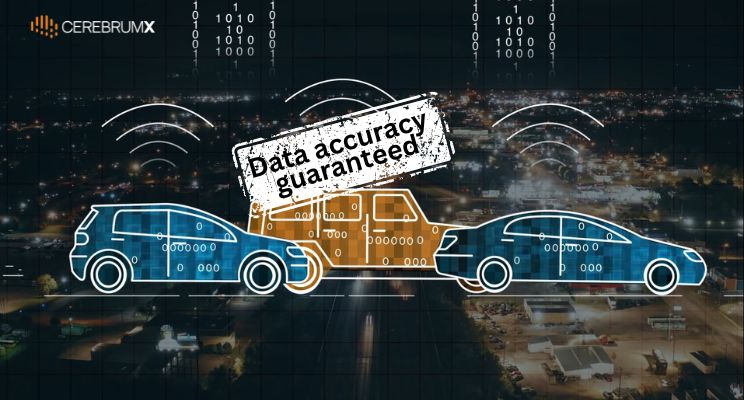Fleets around us today, run on fast, accurate, and reliable data, access to which isn’t always easy but mission critical. The frequency, quality and speed of this data often translates into the difference between proactive action and costly downtime. As fleets grow smarter and more connected, real-time alerts—whether for overspeeding, harsh braking, engine faults, or critical health parameters—have become the backbone of operational resilience. But not all telematics data is created equal, and in a landscape where every second matters, only embedded vehicle data can deliver the unmatched accuracy, immediacy, and reliability today’s fleets demand—even in low-network zones.
While aftermarket dongles have been widely used to pull telematics data, they come with inherent limitations—signal drops, data lags, inaccuracies—that can compromise decision-making when it matters most. Embedded vehicle data, on the other hand, offers a seamless, higher-frequency, real-time, and high-fidelity stream directly from the vehicle’s internal systems, making it the superior choice for modern fleets.
Overspeeding Alerts: Precision that Saves Lives
Speed monitoring is a foundational element of fleet safety programs. Embedded data captures overspeeding instances in real time, with precise speed readings directly from the vehicle’s native sensors. Unlike dongle data, which can miss short bursts of speeding or be delayed due to connectivity gaps, embedded telematics ensures highly accurate and timely overspeeding alerts the moment they occur.
This real-time visibility allows for immediate corrective action, coaching interventions, and, ultimately, a significant reduction in accident risks.
Collision and Impact Alerts: Seconds Matter
In the event of a collision, every second counts. Embedded systems detect impact forces instantly, triggering immediate alerts that include location, severity, and context of the event. By contrast, dongle-based solutions can suffer from latency or even fail to detect lower-force collisions altogether.
Thanks to high-resolution data streaming, embedded data enables near-instant emergency responses, accurate insurance reporting, and root-cause analysis—helping fleets protect drivers, manage liability, and improve post-incident procedures.
Harsh Braking and Acceleration Alerts: Building Safer Driver Profiles
Driver behavior analytics are only as good as the data backing them. Embedded vehicle data captures nuances in braking, acceleration, and cornering with far greater precision than dongles, which often depend on external sensors with limited calibration. By receiving high-frequency, real-time alerts on harsh events, fleet operators can identify high-risk drivers early, personalize coaching strategies, and establish a strong, data-driven safety culture within their teams.
Engine Health Monitoring: Catch Issues Before They Escalate
A vehicle’s engine generates a wealth of diagnostic trouble codes (DTCs) that can signal everything from minor inefficiencies to critical failures. Embedded telematics taps directly into the vehicle’s internal diagnostic system, highly accurate, real-time alerts for engine warnings, misfires, oil pressure drops, and more.
Dongles may only access a subset of these codes—or worse, lose connection intermittently—leaving managers blind to early warning signs. Embedded data empowers fleets to proactively schedule maintenance, avoid costly breakdowns, and extend vehicle lifespans.
Coolant and Temperature Alerts: Prevent Downtime, Protect Assets
Engine overheating remains a major cause of fleet vehicle breakdowns. Embedded vehicle systems continuously monitor coolant levels, engine temperatures, and related parameters, sending instant and reliable alerts when thresholds are crossed. In a dongle setup, such alerts can be delayed or altogether missed if the device loses power or signal. The uninterrupted data flow of embedded solutions ensures that temperature-related issues are addressed before they snowball into expensive repairs or unexpected downtime.
Tire Pressure Monitoring and Battery Health: Going Beyond the Basics
Modern embedded systems can also monitor tire pressure and battery health with precision, sending alerts for underinflated tires, battery voltage drops, and other critical parameters. Timely intervention on these fronts not only reduces maintenance costs but also improves fuel efficiency and driver safety. Again, with dongles, the dependency on aftermarket installation and wireless transmission can create gaps in data availability and accuracy, unlike the continuous, high-integrity stream provided by embedded vehicle systems.
Embedded Data is the Future
From safety-critical alerts like collision notifications to operational insights like engine health monitoring, embedded vehicle data provides an uninterrupted, high-frequency, and high-fidelity stream modern fleets need to thrive. It eliminates the risks associated with signal loss, latency, and incomplete datasets common with dongle-based solutions.
Embedded data powers smarter fleets—fleets that are safer, more efficient, and better equipped to handle the dynamic challenges of today’s roads. At CerebrumX, we offer both embedded and dongle-based data solutions to meet a variety of fleet needs—but it’s clear that embedded always delivers greater results.
📩 Curious about how real-time alerts can transform your operations? Let’s connect and explore the right data solution for your fleet – Connect@cerebrumx.ai

